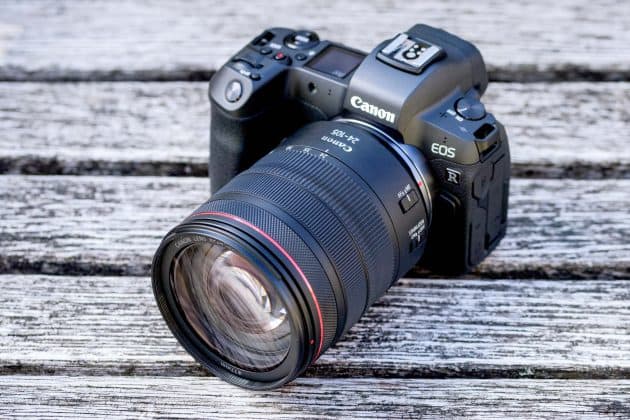AP: Do you continue to see Canon DSLRs as being an integral part of the business? Recently Canon Chairman & CEO Fujio Mitarai told the Nikkei newspaper that he could see the digital camera market shrinking up to 50% over the next two years owing to the threat of smartphones, which raises questions about your R&D priorities for DSLR.
Go Tokura(GT): Yes, we can confirm that DSLRs will continue to be a core part of our business.
AP: Are you going to continue using the EOS M mount, as you now have the EF, EF-S, EF-M, and RF mounts?
Yoshiyuki Mizoguchi (YM): So yes, we have the M mount and also the RF mount launched last year. The M mount is, as you know, is for APS-C format sensors, so its small size and light weight are the key benefits here. The RF mount is for our full-frame mirrorless models, for customers who are looking for the higher image quality, functions and a variety of ways to express themselves visually. So to answer your question, the compact and light M mount will continue, so long as customers require it.
AP: Are you going to keep EOS M in its existing form, or are you going to make a APS-C camera with the RF mount?
YM: That’s a product development for the future so I can’t go into detail, and the market will dictate what sort of direction we should take. If the customers do want a small size, lightweight mount I believe there is room for that, so as we said in the previous answer, we will continue to work with the M mount.

AP: You have announced an ambitious RF lens road map, but what is happening with EF lenses?
Naoya Kaneda (NK): The RF lens roadmap will be a priority for the immediate future. In terms of EF lenses, because we have a number of adaptors that will work with the EOS R, we believe we are optimizing the capabilities of EF. Furthermore, we don’t distinguish so much between RF and EF, we look at it as a total camera system, so again, we will follow what the market dictates.
AP: A lot of the RF lenses are targeted towards more advanced users, e.g. the 28mm-70mm f/2. Do you plan to supply more mainstream lenses for the entry level, and for the new EOS RP?
NK: So the short answer is yes…. The new 35mm you see here and also the 24-240mm we have just announced are all targeted at entry level users. Going forward, we will continue to develop lenses for the professionals, amateurs and entry-level users to satisfy all their requirements.

AP: At the other end of the scale, you have premium lenses… do you see a need for a higher-end body for the EOS R to use them on?
YM: In terms of the EOS R system, it is about offering lenses with higher functions and features. We want people to enjoy this variety of photography, hence the development of both the EOS R and RP. That said, while the R and RP are good cameras, we are not resting on our laurels…. so yes, we are considering a higher-end premium body, as you mention.

AP: There have been quite a lot of requests from customers and reviewers alike for IBIS on the EOS R, not to mention dual card slots. How do you respond to this?
YM: Yes, we are aware of these voices… We are thinking how we can develop the line-up. With the R and RP we look at the entirety of the package, as mentioned. In terms of IBIS, we are looking into it for the future. We believe IBIS will work together hand in hand with optical IS lenses, such as the ones you see in front of you, to offer better features.
AP: Do you think the mirrorless market has peaked, particularly in Japan, and do you ever regret coming relatively late to the mirrorless party?
GT: The pace of the shift to mirrorless has slowed down a bit here in Japan and the mirrorless market share for cameras stands at about 60%. As you may know, Canon has a history of not always being first in the market with new technology, but we are very good at catching up, going beyond and becoming the leader.







